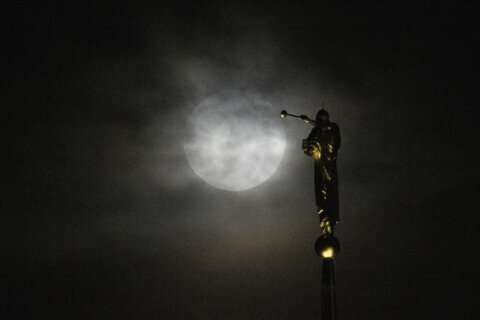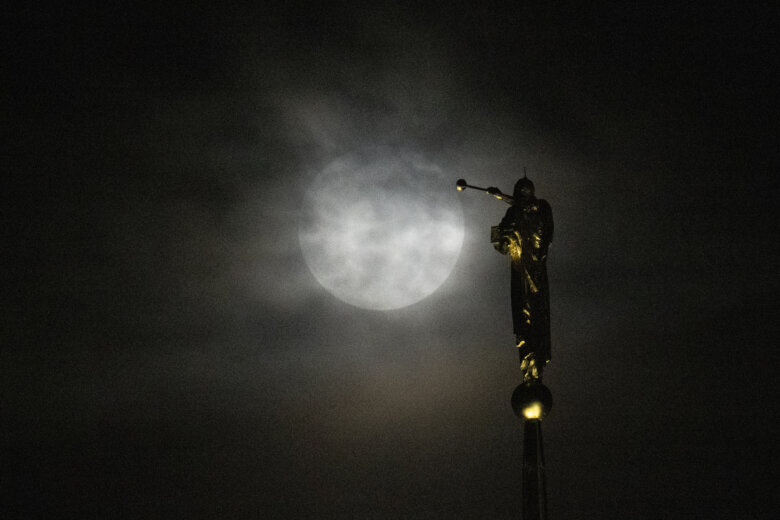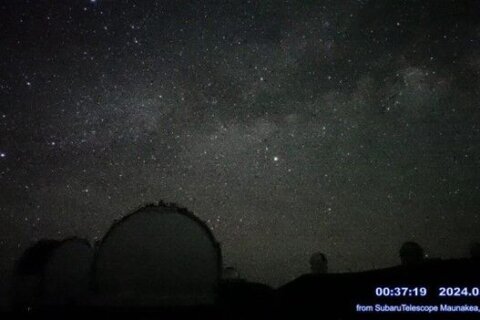
Millions of moon lovers worldwide are watching the skies as the “full super blue moon” rises Wednesday night where they are. And the D.C. area is no exception, that is, of course, if the weather cooperates.
As the saying goes, it happens once in a blue moon, and the last time there was a full super blue moon was in 2018. There will not be another event like this until Jan. 31, 2037, which will also be a blood moon — a total lunar eclipse.
The moon rose in the east at 7:54 p.m. But it will be at its brightest and largest as the supermoon and officially the blue moon at 9:36 p.m. Eastern Daylight Time.
It so happens that this full moon is also the closest full moon to Earth in 2023. That equates to it being the largest and brightest full moon for the entire year. Tides associated with this event will be larger as well, which could add to the effects of Idalia.
As for your viewing prospects in the D.C. region, clouds are present but it is still worth looking during the night to try and see this special moon with Saturn visible to the right of the moon.
The planet Saturn will be keeping the moon company all night long. Saturn will be at its brightest for the year as it was directly opposite the sun on Aug. 26.

As provided by Sky and Telescope: “Saturn accompanies the moon across the sky tonight. Saturn seems to swing from upper right of the moon at dusk, as shown above, to directly right of the moon by about 1 a.m., then lower right of the moon as the hours approach dawn.”
Don’t be dissuaded by the clouds, as they can really add to the beauty of a full moon rising and during its journey across the sky.
The view will be most dramatic along the beach, in the mountains or any place with a clear view of the Eastern horizon. Framing the view with landmarks is rewarding as well.
Use your smartphone or camera to photograph moonrise and the moon-Saturn duo. Just set your smartphone/camera on auto exposure and take a picture. Adjust settings as needed.
You can watch this event online starting Wednesday at 11:30 p.m. EDT.
Here’s hoping for a good view!








